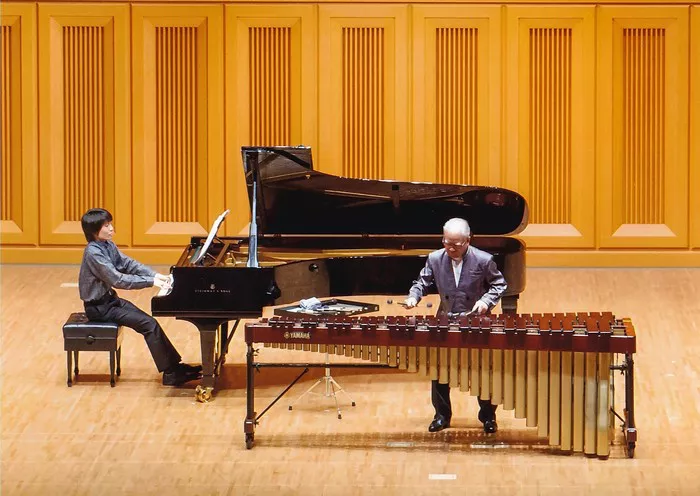In the southern reaches of the Philippines, in the Sulu Archipelago, a musical tradition resonates through time and culture—the kulintang. Serving as the native xylophone of Sulu, the kulintang holds profound significance in the musical tapestry of the Tausug people. In this article, we will delve into the origins, characteristics, and cultural importance of the kulintang, a unique percussion instrument that echoes the rich heritage of Sulu.
The Kulintang: An Overview
The kulintang is a traditional xylophone-like instrument characterized by a set of small, horizontally laid gongs. Typically made of bronze or brass, these gongs vary in size, producing distinct pitches when struck with mallets. The arrangement of the gongs reflects a meticulous design, creating a melodious ensemble that forms the backbone of Tausug music.
Origin and Cultural Significance
The roots of the kulintang can be traced back to ancient maritime trade routes, where cultural exchanges influenced the music of the Sulu Archipelago. The instrument has evolved over centuries, integrating indigenous elements with external influences, resulting in a unique musical tradition that embodies the diverse history of Sulu.
Culturally, the kulintang is not merely an instrument; it is a symbol of identity, community, and heritage for the Tausug people. Its presence is integral to various social and ceremonial events, marking transitions, celebrations, and communal gatherings.
See Also: The Appearance of the Xylophone: Things You Need To Know
Construction and Components
A typical kulintang ensemble consists of a row of gongs mounted on a wooden frame. The gongs are arranged in ascending order of size, with each gong representing a specific pitch. The number of gongs can vary, but a standard set may include seven to nine gongs. Each gong, or “kulintang,” has its own name and serves a unique role in creating the harmonic and rhythmic complexity of the ensemble.
The gongs are played using wooden mallets, and the musician, known as a “kulintang player” or “kulintangan,” employs a combination of striking techniques to produce intricate and expressive melodies. The skilled manipulation of dynamics, accents, and pauses adds layers of nuance to the music, showcasing the artistry and mastery of the kulintang player.
Melodic and Rhythmic Complexity
One of the defining features of the kulintang is its ability to produce both melodic and rhythmic elements simultaneously. The player’s skillful execution of different patterns on the gongs contributes to the creation of a rich and textured musical landscape. The interplay of melodies and rhythms within the kulintang ensemble reflects the depth of Tausug musical expression.
Cultural Context in Performance
The kulintang is not a solitary instrument; it is often part of a larger ensemble, complementing other traditional instruments like the agong (large hanging gong), dabakan (single-headed drum), and other percussive elements. This ensemble, known as the “kulintang ensemble” or “kulintang ensemble,” performs a repertoire deeply rooted in Tausug cultural narratives, reflecting the diverse emotions, stories, and rituals of the community.
Ceremonial and Social Functions
The kulintang plays a vital role in various aspects of Tausug life. In ceremonial contexts, such as weddings, rituals, and cultural celebrations, the kulintang’s presence signifies the importance of the event. The music produced by the kulintang ensemble serves as a communal thread, weaving together the fabric of Tausug identity and heritage.
Moreover, the kulintang is a dynamic and adaptive art form. While rooted in tradition, it continues to evolve as contemporary Tausug musicians explore innovative ways to incorporate the instrument into diverse musical genres, fostering a bridge between the past and the present.
Preservation and Transmission of Cultural Knowledge
As with many traditional art forms, the kulintang faces the challenge of preservation in the face of modernization. Efforts to safeguard and promote Tausug cultural heritage include initiatives to document and pass on the knowledge of kulintang playing to younger generations. This transmission of cultural knowledge ensures that the kulintang remains a living tradition, perpetuating its significance for future Tausug communities.
Conclusion
In the resonant echoes of the kulintang, the heartbeat of Tausug culture reverberates. As the native xylophone of Sulu, this instrument transcends its musical role, serving as a vessel for cultural expression, community identity, and the continuity of heritage. Understanding the kulintang is to delve into the soul of the Tausug people, where each strike of the mallets weaves together a narrative that stretches across time and generations. The kulintang is more than a melodic instrument; it is a testament to the resilience and vibrancy of a rich cultural legacy that endures in the harmonies of Sulu.


